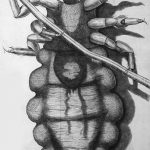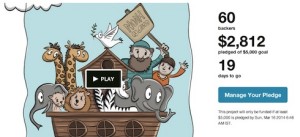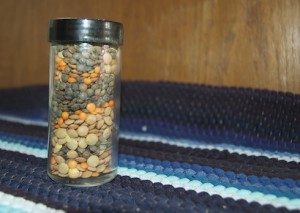
WARNING: This post is likely to cause general head itchyness. Sorry! Please read anyway.
My daughter’s gan is up to the Hebrew letter Kaf this week. I had suggested that it might be a great time to talk with them about KINIM, or Lice. My thought was:
1. Lice tend to be a problem in settings with lots of children 2. Children are naturally curious about things like insects 3. Knowing more about them could help them control it better. I figured lice is not a taboo topic here like it is in other countries so it should be ok to talk about them as part of core lessons. 4. Great tie in to the weekly parsha (notice the post title- and think ten plagues.)
However, even though there isn’t a taboo, just mentioning the word sort of makes people itch? And tends to GROSS PEOPLE OUT. Combine that with nausea related to pregnancy (not me, the teacher) and the answer was no lice. Oh well! And we have a great book too with great electron microscope photos of lice and eggs. If they don’t get to suffer through lice info at least you do. Note this is only about head lice, the Torah portion seems to talk about lots of different types of lice. I leave you to look into that on your own.
So here are a few useful resources-
General information about lice
Print a photo of a louse and label its antennae, eyes, legs, mouthparts, thorax and abdomen. I recommend
this drawing from clipart ETC. For examples of how to label see
abcteach.com (they have a flea but no lice)
Do you have any other ideas for including lice in general insect study?
For fun
How about singing “the lice go marching one by one…”
making lice from socks or egg cartons
“checking” dolls for lice
Constructing lice body parts using scrap paper
The following sections are aimed at parents but its useful to discuss these things with your child. It makes them more aware and they’re likely to relay the information to their friends which in turn makes it less likely that you’ll need to use this information in a practical way.
 Preventing lice
Preventing lice
Keep the hair tied back- very important. Some child with lice is likely to sit next to, play with, scuffle with your child. Loose hair is much easier than tied back hair for lice to travel along. If your young child is into wearing fireman hats or the like, encourage that. That also keeps them lice free. Our preference is for either very short hair or hair that is long enough to tie back well and yet not be too long that combing it can be compared to walking on broken glass.
I don’t know if rosemary works but it smells nice.
Comb often, check hot spots (behind ears, nape of neck) and other locations often. Do you notice your child scratching? Do the head submerge, combing routine right away. Do you see another child scratching? Mention this to their parent. Even in places where lice is taboo, parents should be thankful if they can eliminate lice when there may be one present rather than 500. Did you find living lice or viable nits? Tell your child’s teachers, friends because if there is one child with lice inevitably there are more. When parents hear about an outbreak they are more likely to be vigilant than not.
Getting rid of lice
These are tips I have gotten from more experienced lice checkers. The favorite method around here is
Bath- submerging all hair so that if there are living lice they don’t stay that way. Note that the bath is not per-say to get clean (lice don’t seem to care much about that) but it is intended to eliminate oxygen intake.
Conditioner- important in helping to remove potentially hatchable eggs as well as make it easier to comb without making a child miserable.
extremely good lice comb- able to remove eggs as well as hatched lice.
Notice the list doesn’t say chemical treatment. Some people do use these but both unscientific research and I believe discussions with a volunteer where I used to work (whose research area was lice) seems to indicate that there is not a significantly greater success of preventing/riding lice naturally or with the heavy duty stuff. It seems lice are becoming resistent to the heavy duty stuff as well. A brief discussion can be found
here (pdf) . In any case, its not part of our treatment method (when we have to use it, which Thank God, has not been infrequent but don’t let that stop you if you are so inclined. Our preference is to make sure to get all eggs out and any living creatures out as well.
I have not noticed (and this is not empirical in any way) that children treated with the special shampoos have infestations less than those without or that they get over them faster. In fact, there does seem to be evidence of lice becoming immune to the chemicals. The main thing seems to be eliminating the full life cycle of lice and that means making sure there are no hatchable eggs.
You can read about all types of other treatments- coconut oil, teatree oil, salad oil, salt with shampoo etc. I think the main thing is preventing them from breathing and preventing them from hatching. Both require work.
More resources
I’d love to hear from the real experts about this topic. I’d love to hear why some children seem to be more attractive to lice than others or for some super duper prevention techniques. Also would love to hear if you made it to the end of this post without SCRATCHING your head!
PS: Are you wondering why a post about lice includes a picture of rabbits? Thats mostly a joke- one of my nieces used to call lice bunnies when she was little and the name has stuck. Its less itchy for people to talk about bunnies then lice. Also if they are not controlled they multiply like bunnies.
 Preventing lice
Preventing lice



Add a Comment